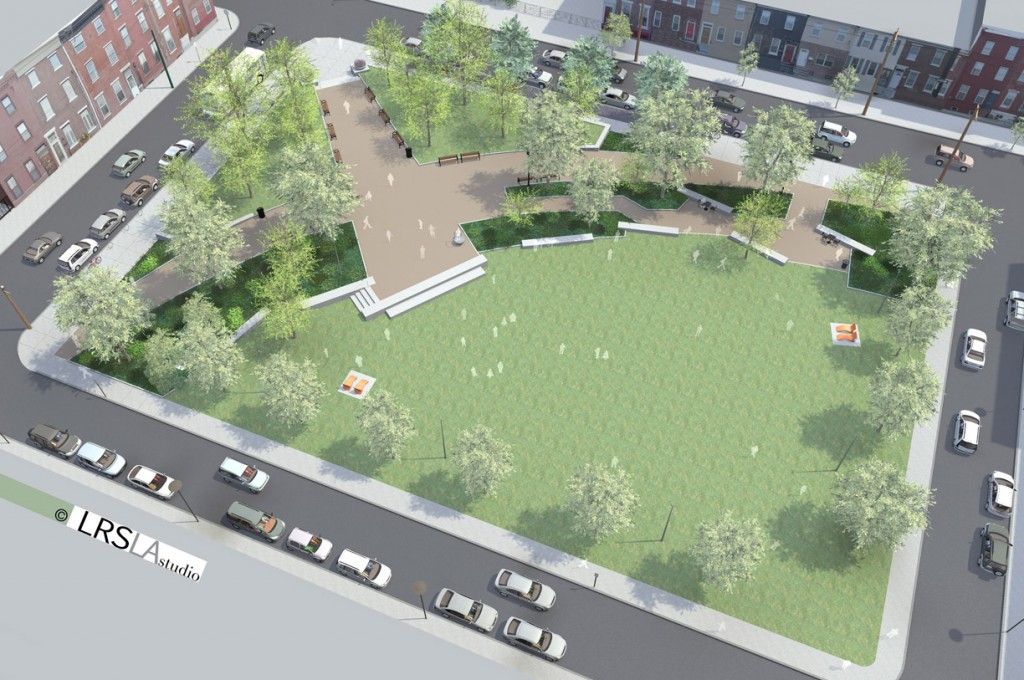
Hawthorne Park
PROJECT
HISTORY
Initial conception
of the park began in Spring 2003 as a collaborative partnership between the
Hawthorne Empowerment Coalition, Residents of Hawthorne Square, Universal Companies,
The University of the Arts Industrial Design Department, and the Philadelphia
Housing Authority. The Pennsylvania Horticultural Society joined the group in
spring 2004, serving as chief liaison and shepherd to bring the project to fruition.
From winter 2004 to winter 2005 the project went through a series of charrettes
culminating with project goals and a final design concept. An estimate of probable
cost was established in winter 2007. Funding was secured from several sources
including the Commonwealth of Pennsylvania through Department of Conservation
and Natural Resources, a grant from the Department of Community and Economic
Development through the Pennsylvania legislature from State Representative Babette
Josephs, the City of Philadelphia through Councilman Frank DiCicco, The Pew
Charitable Trusts, and the William Penn Foundation. Lager Raabe Skafte Landscape
Architects, Inc. was retained for design services and began work fall 2008.
Over the following year, working closely with Fairmount Park, The Pennsylvania
Horticultural Society, the Philadelphia Water Department, and the Hawthorne
community, the team explored a series of design options to fulfill the goals
established over the prior years.
DESIGN
CONCEPT
The design evolved and grew to embrace the ideals of the community goals. Elevated
with walls along 12th Street and Catharine Street, a visually dynamic edge is
created to define the park from the active urban pace. An open edge along Fawn
Street and Clymer Street to a flat lawn provides a shared front yard for the
adjacent residents. Through the integration of circulation and space, versatile
paved areas support activities from reading to community markets to providing
an elevated performance space, while minimizing paved surfaces. Green space
has been maximized, providing lawn for active use or serving a place for the
eye to rest. A ‘green belt’ of plant beds curves along the mid-section
of the park providing visual access to all areas. Trees and space are organized
attempting to make the park feel larger than it is while framing surrounding
urban context and the city skyline. The identity of the park strives for a unique
character while maintaining an enduring aesthetic using classic forms and materials
with contemporary lines and proportion.
ENVIRONMENTAL
CONSIDERATIONS
Previously a vacant gravel lot, existing urban fill was replaced with healthy
soil to sustain approximately 50 trees, 4,000 square feet of plant beds and
19,000 square feet of lawn. A high efficiency irrigation system was installed
to nurture the plants while minimizing water use. Total green space accounts
for approximately 60 percent of the site, including roughly 12 percent for the
plant beds, filled with tough, low maintenance plants. The remaining area utilizes
approximately 6,000 square feet of permeable unit paving, disconnecting the
majority of stormwater from the City’s stormwater system. Durable, high
quality materials and furnishings along with a manageable and maintainable planting
help foster a long-lived and long-loved community park.
After almost 10 years of work by many dedicated members of the community and
considerable support from outside partners, Hawthorne Park was completed and
officially dedicated in the spring of 2012.
